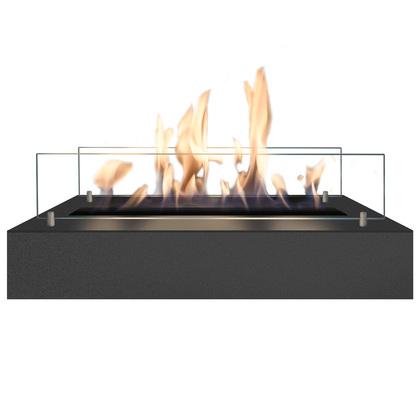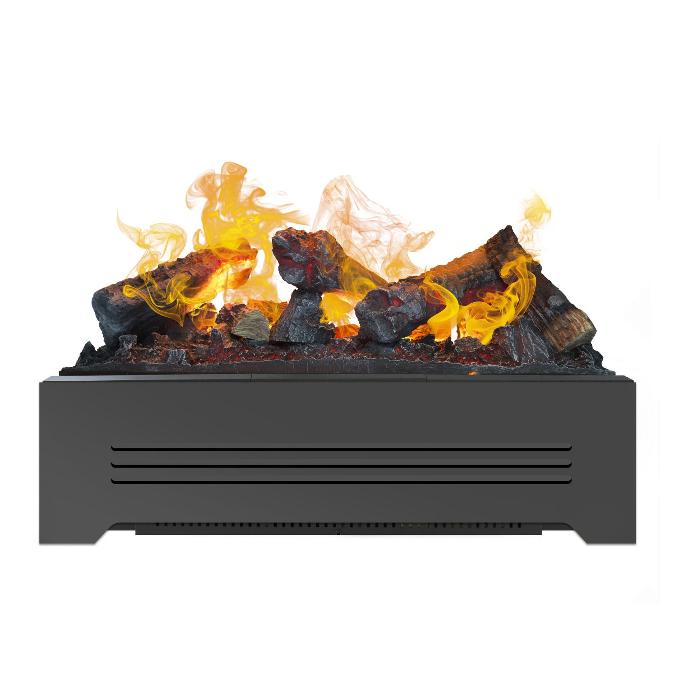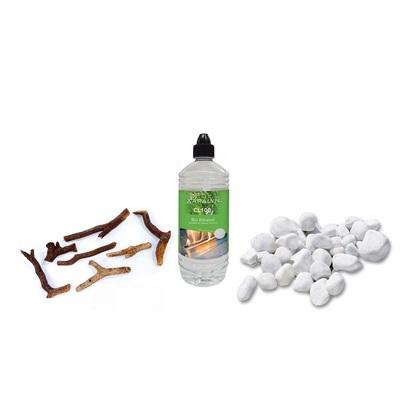What do you smell when burning a bioethanol fireplace?
Bioethanol — sometimes called bio-alcohol — doesn’t actually burn in liquid form. It’s the gas released during evaporation that ignites. The colder the environment, the less evaporation occurs, resulting in smaller flames.
Bioethanol is made from plant waste. When burned, it doesn’t produce a strong or obvious smell, although some users may notice a slight scent. That makes sense — something is being combusted, after all. Like a wood-burning stove, a bioethanol fireplace uses oxygen from the room. Without proper ventilation, this becomes noticeable. But ventilation doesn’t always mean opening a window; mechanical ventilation, a slightly open interior door, or a window vent is usually sufficient. How much ventilation you need depends on how much fuel is being burned. A large burner in a small room requires more ventilation than a small burner in a large space.
Bioethanol can be made from many types of crops or plant waste. In Western Europe, it is usually derived from corn or corn residues. Ethanol made from corn may give off a very faint, sweet smell, though this is hardly noticeable for most people.
Pure bioethanol produces hardly any smell when burned
Bioethanol isn’t 100% alcohol. Naturally, it’s made up of about 98% alcohol and 2% water.
Due to taxation laws, bioethanol is denatured to make it unfit for consumption. After this process, it typically contains 96–97% pure alcohol. This is what we refer to as “100% pure bioethanol” in practical terms. If the percentage is lower, it usually means the product has been diluted with water or contains additives.
When burning pure bioethanol, only water vapor and a small amount of CO₂ are released — no harmful or foul-smelling substances. High-quality bioethanol — such as Xaralyn Original or CL100 — is so pure that it produces virtually no odor. In well-ventilated spaces, the scent is often undetectable. However, people with a sensitive sense of smell or in poorly ventilated rooms may notice a faint alcoholic scent, especially when lighting or extinguishing the flame.
When are bioethanol smells most noticeable?
- When opening the bottle
- When refueling the burner
- When igniting the flame
- When extinguishing the fire
The role of scent in the user experience
If you're considering a bioethanol fireplace, it's good to know that perception of smell is subjective. What’s unnoticeable to one person might stand out to another. This depends on:
- Personal sensitivity
- Room size and ventilation
- Duration of use
- Type and quality of bioethanol used
Users who opt for cheap, low-purity bioethanol often experience stronger smells, visible smoke, or even headaches. This is usually due to impurities in the fuel. That’s why it’s essential to choose high-quality bioethanol with an alcohol content of at least 96%.
Can bioethanol fumes cause headaches?
Not when used with proper ventilation and high-quality fuel. However, cheap fuels with impurities and poor air circulation may cause irritation or headaches in some people.
What can you do to reduce bioethanol smell?
- Always choose bioethanol with a purity of at least 96%
- Ventilate the room regularly
- Use a high-quality fireplace
- Do not leave bioethanol exposed to air (it evaporates!)
- Only refill the burner when it is completely cool
Scented Bioethanol
Some suppliers offer scented bioethanol with added fragrances like lavender, pine, or vanilla. While this may sound appealing — a fireplace with a pleasant scent — it comes with significant downsides.
These added fragrances are almost always oil-based, which means they can produce soot and residue when burned. This negates bioethanol’s greatest advantage: a clean, low-emission flame. Instead of a pure flame emitting only water vapor and CO₂, you're burning additional substances that can be harmful to indoor air quality.
Worse yet, fragrances are sometimes added to mask the smell of poor-quality bioethanol. What may seem fresh and luxurious could actually be a cover-up for impurities in the fuel.
For a healthy and safe indoor environment, it’s best to avoid artificially scented bioethanol and choose a high-quality, fragrance-free version. This ensures your fireplace remains both atmospheric and clean.
Cheap bioethanol: Why it sometimes smells bad
Not all bioethanol is created equal. Lower-cost variants are often recycled from food industry waste streams. This type of ethanol is not originally intended for fuel, but rather for industrial purposes, such as cleaning agents or disinfectants. Technically, this ethanol can burn — but not without drawbacks.
Cheap, recycled bioethanol may contain residual odors from the original materials or denaturing agents. When burned, these can produce a noticeable or even harsh smell, which diminishes the ambiance and comfort of your fireplace. In some cases, these residues can also cause eye or respiratory irritation, especially in poorly ventilated spaces.
The bottom line: If you value comfort and air quality, choose high-quality, low-odor bioethanol. Premium bioethanol — like Xaralyn CL100 — is specifically designed for safe indoor combustion, offering a clean and nearly odorless flame. Cheap bioethanol may seem like a bargain, but it can lead to unpleasant odors and even long-term damage to your fireplace.
Does odorless bioethanol exist?
Completely odorless bioethanol doesn’t exist, but there are extremely low-odor options like Xaralyn CL100, which emit almost no smell under normal use.
Bioethanol odour vs other fuels
| Fuel Type | Odour | Harmful Emissions | Chimney Needed |
|---|---|---|---|
| Wood | Strong | Yes (soot, particles) | Yes |
| Gas | Light | Yes (CO₂, methane) | Yes |
| Bioethanol | Light (mainly at ignition) | No (only CO₂, water vapour) | No |
| Electric | None | None | No |
Bioethanol is therefore one of the least odourless fuels, if used correctly.
Conclusion: Is bioethanol odourless?
While not 100% odourless, high-quality bioethanol comes close to odour-free comfort when used correctly. Want to enjoy your fireplace without unpleasant smells? Follow these tips:
- Choose only top-grade bioethanol
- Ventilate properly
- Refill carefully
- Avoid cheap or uncertified fuel
With the right choices, you can enjoy a cosy, low-odour fireplace for years to come that is also sustainable and safe.



